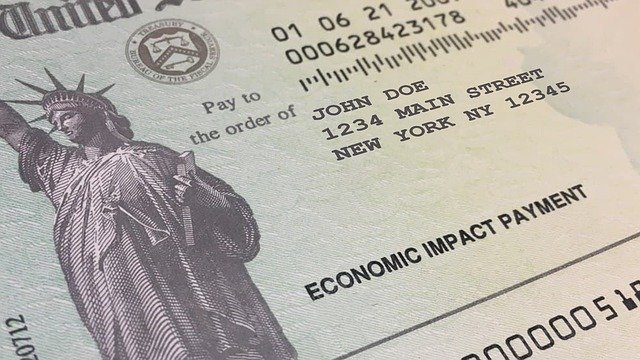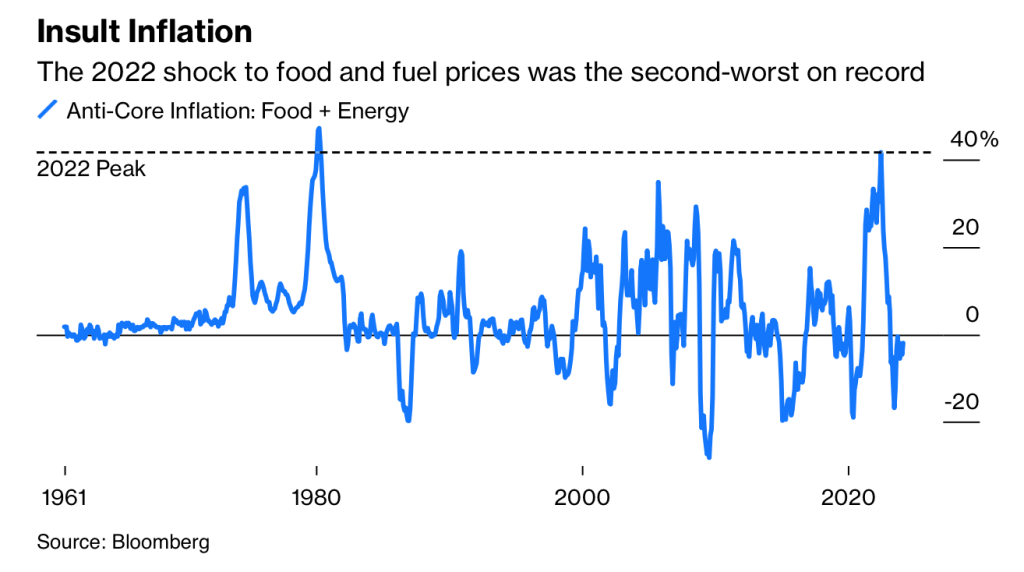Yves here. It’s worth keeping tabs on the various elements of elite disconnect with the lives of those they regard as the masses. An obvious one has been the economy, where pundits insist the meal is the menu, and because their preferred measures of labor market health look perky, and inflation has moderated significantly, those who dare say that the natives are unhappy with Biden policies are wrong and/or trying to foment discontent.
Never mind that even if food prices aren’t increasing by much in the US these days, they’ve risen by so much that many still have not adjusted to the higher baseline. Housing is not to barely affordable for many. Health care is too pricey and getting more so. And that’s before getting to health care shrinkage via service degradation, such as substitution of less-trained medical professionals for MDs.
A simple alternative metric that shows Biden has done squat for those towards the bottom of the food chain: the percentage of Americans with less than $400 at hand for an emergency is 37%, back at the same level as in 2019, before Biden came to office. That is up from 32% in 2020, during the Covid stimulus period.
Oh, and that factoid does not factor in that you’d have to have $488 now to match the purchasing power of $400 in 2019.
In a bit of synchronicity, Bloomberg columnist John Authers points out this morning that US small business are in a particularly dour mood, and inflation is a big reason why. From his People Are Angry to the ‘Anti-Core’ Over Inflation:
Exhibit A is the usually very useful survey of small business optimism conducted by the National Federation of Independent Business. It’s been running a long time and has a good history as an economic leading indicator. Very few small business owners are bleeding-heart liberals, but this hasn’t compromised the survey in the past. Yet it certainly looks like that’s happening now. Somehow or other, their optimism has just dropped to a lower level than it ever touched during the worst of the pandemic. Indeed, it hasn’t been this low since December 2012, when they had to digest the surprisingly comfortable reelection of Barack Obama:
Other than that, pessimism has only been greater during the Global Financial Crisis, and — much more briefly — the dire days of 1975 and 1980 when the US was dealing with both economic recessions and humiliating international reverses (in Vietnam and Iran). Pessimism was never so deep during the Gulf War, or in the wake of the dot-com bubble, or even the pandemic. Reviewing history, we find that the election of Donald Trump led in swift order to the greatest optimism on record. Greater than the late 1990s? Really?
Nobody doubts that small business leaders are sincerely pessimistic, or that their negativity about prospects brings with it the risk of a self-fulfilling prophecy. If they hold off investments or hiring because of the grim outlook they foresee under Biden, that will be bad for the economy. But would they really think things were this bad if they weren’t viewing them through the polarized lens of 2024’s politics?
Then there’s the issue of US inflation….
The Bureau of Labor Statistics doesn’t regularly publish a measure for just food and energy. However, they have indexes for both categories stretching back to the late 1950s…Rather than attempt any subtle rebalancing, I produced an “anti-core” index of food plus energy by just adding the two indexes together. I’m sure there are better statistical ways to do this, but there are also many worse ways of gauging just how painful inflation feels to consumers.
This is how year-on-year inflation of this measure has moved since 1961. It’s been hugely variable, but the spike in the summer of 2022 was quite something. Indeed, it was the worst anti-core inflation in 42 years; it was higher even than during the horrors of the oil crisis of the 1970s. This is how bad it looks:
It’s not surprising that a spike of that severity would leave a mark and create a lasting stain on popular confidence in the current administration. However, it’s also important that this measure continues to be very erratic, and has been negative for several months now. Not only is the rate of inflation down, but prices themselves are actually falling. Will President Joe Biden get some credit?
So while Les Leopold’s idea is helpful, it’s still scratching the surface of what needs to be done.
By Les Leopold, the executive director of the Labor Institute and author of the new book, “Wall Street’s War on Workers: How Mass Layoffs and Greed Are Destroying the Working Class and What to Do About It.” (2024). Read more of his work on his substack here. Originally published at Common Dreams



